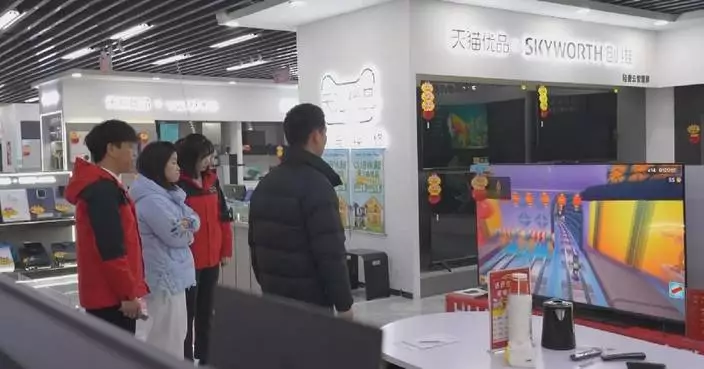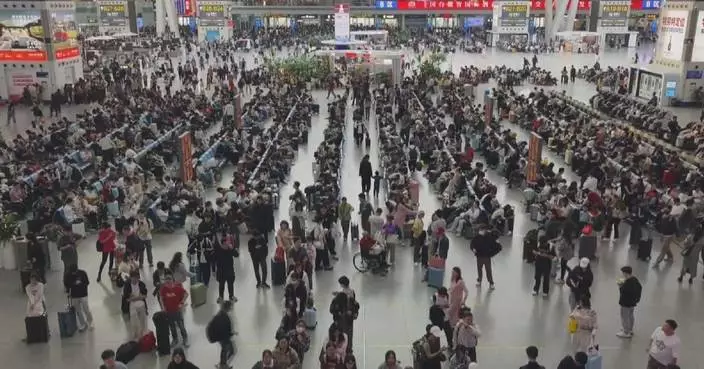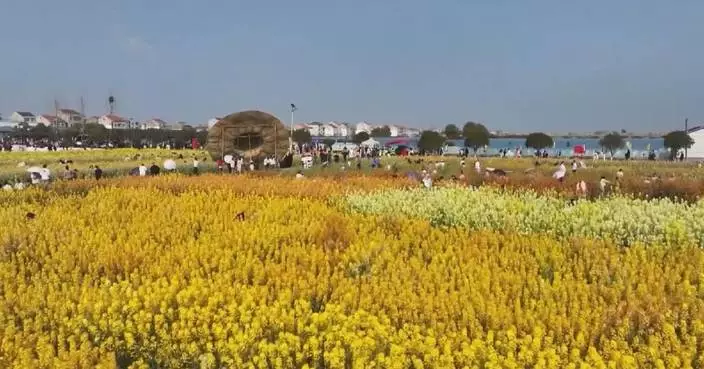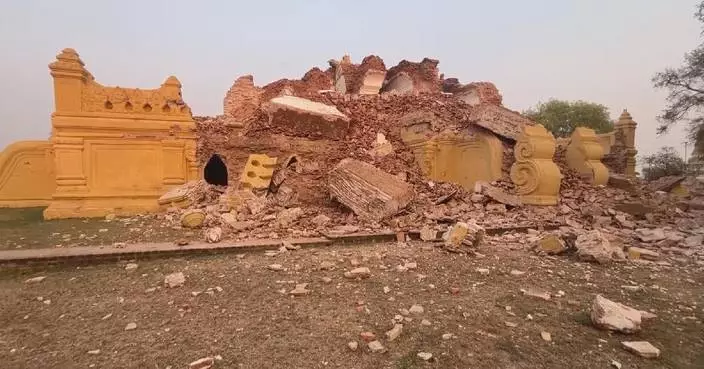Continuous heavy rain in southwest China's Sichuan Province and Chongqing Municipality induced flood and landslides on Sunday, sweeping houses, farmland, disrupting traffic and leaving residents stranded.
At Tianjia Town, Sichuan's Neijing City, the floodwater overflowed swollen rivers to submerge streets, houses and farmland.
In response, the local armed police rushed to the flood-hit regions with various rescue equipment and boats to evacuate residents stranded in the flood.
As of 20:00 Sunday, the armed police officers, firemen, militiamen and other police officers had transferred more than 3,700 people of the town to safe places.
Heavy rain also triggered a landslide in Chongqing's Kaizhou District on Sunday, blocking the traffic of a highway which was still closed by 09:00 Monday.
Nearly 200 meters of the road were buried by the rubble of the landslide.
The police closed the road temporarily and the local government arranged staff members to stand guard at the road section around the clock.
The rain stopped on Monday morning and repair work would begin when conditions permit.
On Sunday noon, a senior citizen was stopped on his way to hospital due to the landslide.
Upon receiving an emergency call from his family for help, police officers rushed to the site and successfully transferred the patient to the ambulance after 20 minutes of effort.

Floodwater, landslide sweep houses, farmland, disrupt traffic in southwest China
Various high-tech and innovative devices, including artificial intelligence (AI), robot dogs, 3D digital images, and VR shows, enhance visitors' experience across major Chinese tourist attractions during the three-day Qingming holiday, which started on Friday.
An innovative mechanical system helps tourists mitigate their physical limitations during mountain climbing at Mount Tai in Tai'an City, east China's Shandong Province.
The system weighs less than two kilograms and has a battery life of up to five hours.
It's easy to wear and helps conserve 30 to 50 percent of physical energy.
The scenic area has set up rental points at the foot of the mountain and halfway up.
The rental fee is 80 yuan (around 11 U.S. dollars) for three hours, and with over 100 units available, they have quickly become a popular choice.
"It pulls my legs up, like someone is helping me climb. Earlier, I could barely lift my legs, but now, the experience is great," said a tourist.
The tourist spot also provides smart audio guides that can sense their location in real-time through satellite positioning and automatically broadcasts relevant information about the area.
Additionally, the device has an SOS button. If tourists encounter danger or need emergency help, they can press it, and rescue personnel will come to assist them. At the summit of Mount Tai, a robot dog is being tested to help remove waste, reducing the workload for humans.
During peak tourist seasons, the site can host up to 80,000 visitors daily, generating over two tonnes of waste daily. Waste removal used to rely on manual labor with a shoulder pole over numerous steps.
The waste-carrying robot dog weighs only about 40 kilograms but can carry up to 100 kilograms. In contrast, humans with a shoulder pole can only carry 30kg to 40 kg at a time.
Additionally, with its four legs, the robot dog is more stable than a human and can freely ascend and descend steps while carrying heavy loads.
It can operate for six hours to eight hours on a single charge.
Once the testing is completed with improvements to be made, more robot dogs will be deployed to reduce the pressure of manual waste management in the scenic area.
In recent years, immersive spaces created by digital technology have emerged as a new form of cultural tourism, attracting increasing attention with their unique charm.
During this year's Qingming Festival, various cultural heritage venues, scenic spots, and urban districts have launched immersive experiences, offering new digital experiences and consumption opportunities.
At Mount Tai, there are over 1,600 precious stone carvings left by different dynasties.
These treasures are now entering the public's life as 3D-rendered digital images, leading to richer cultural depth.
By scanning a code with smartphones, consumers can access detailed digital archives, including the historical background of the stone carvings and calligraphic interpretations, allowing collectors to experience the depth of Mount Tai's culture in their hands.
VR shows are available in the Chinese literature-inspired theme park "Liaozhaiyuan" in the Zichuan District of Zibo City in Shandong Province.
The park, located in the hometown of the writer of "Liaozhai Zhiyi" (or "Strange Stories from a Chinese Studio"), offers visitors virtual reality (VR) glasses to help visitors better experience the stories and characters of the famous Chinese fiction.
Meanwhile, in Beijing’s 798 and 751 art zones, an exhibition featuring 24 artworks by artists across 13 countries blends a variety of art media - painting, installations, photography, and biological devices - with digital technologies, immersing visitors in the groundbreaking fusion of art and technology.
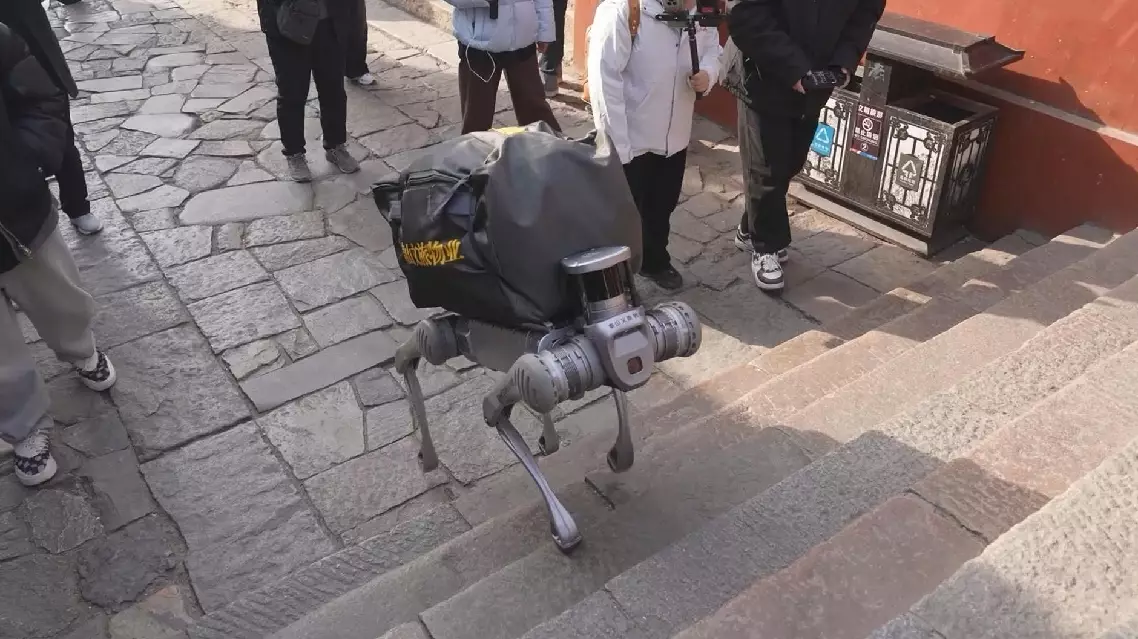
High-tech enhances tourist experiences at China's scenic spots during Qingming holiday





